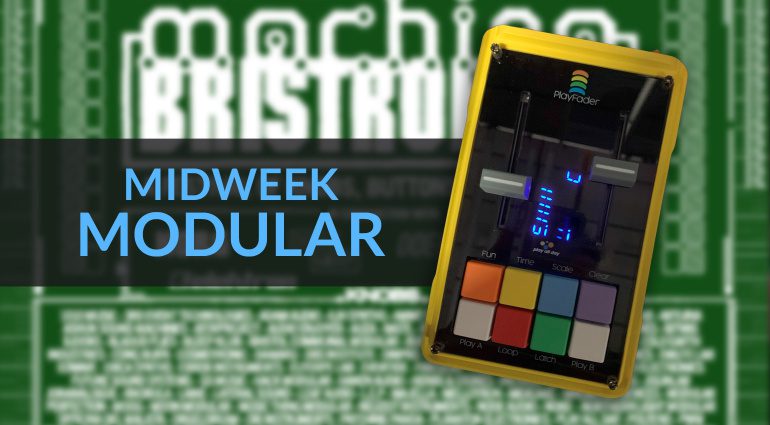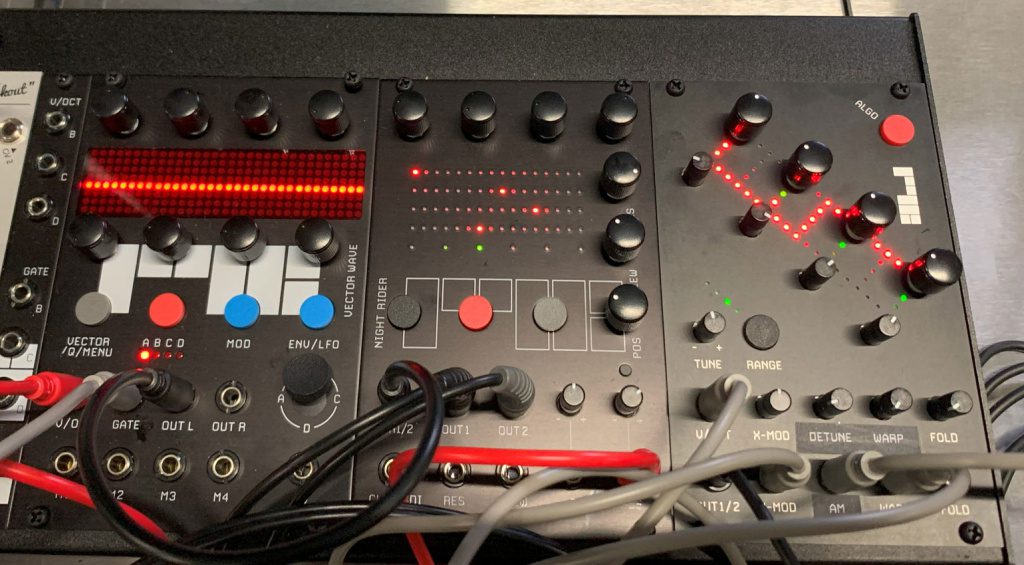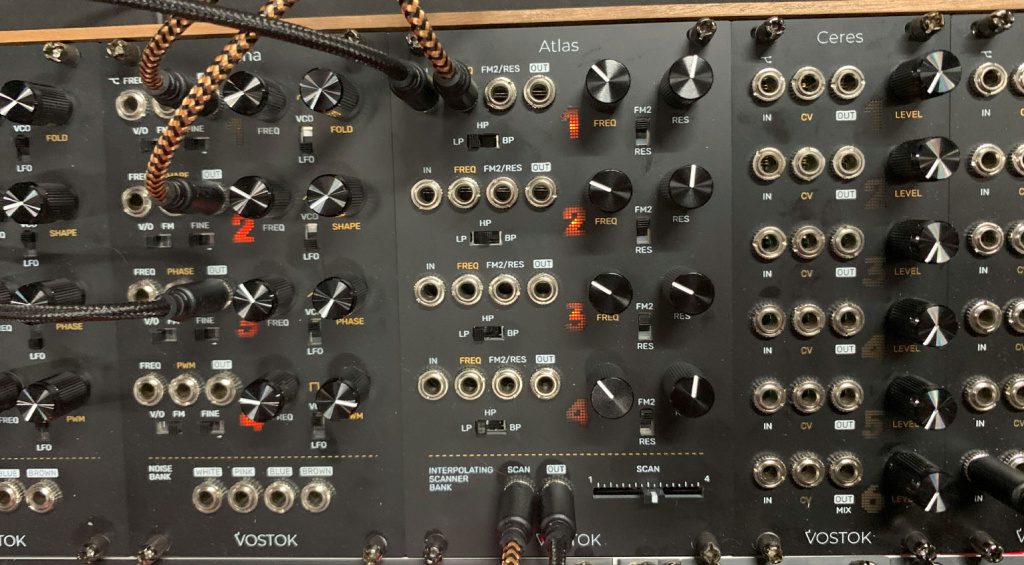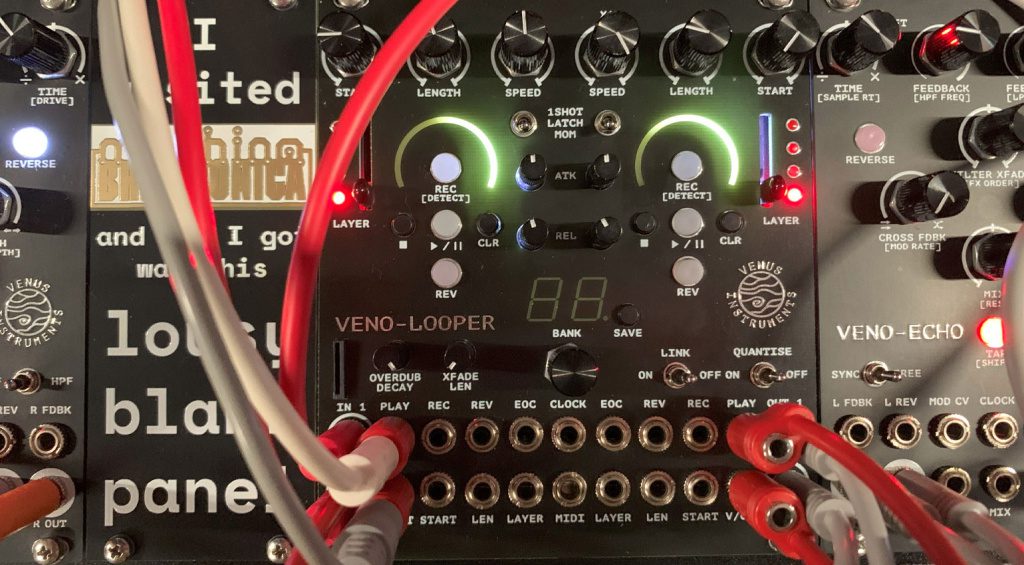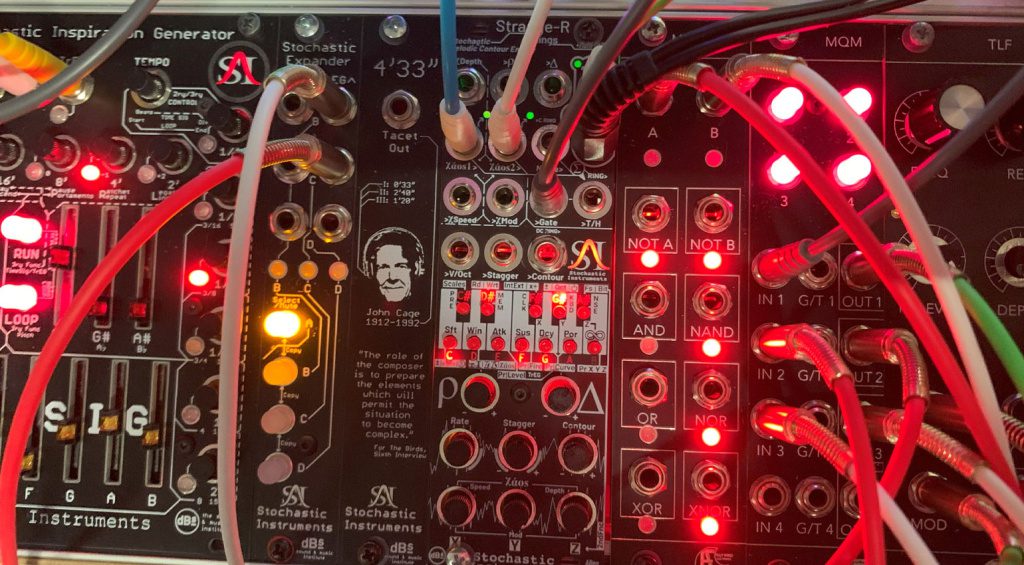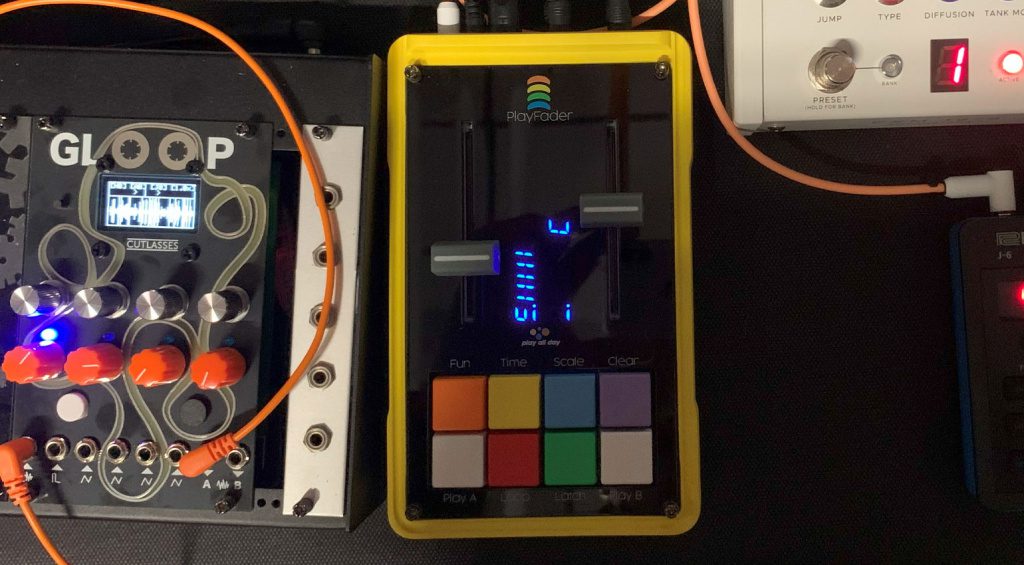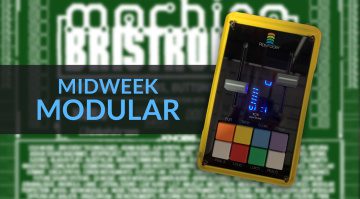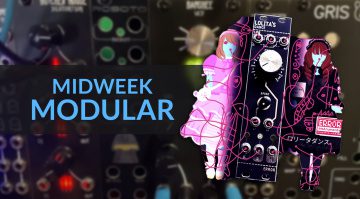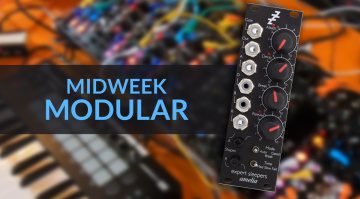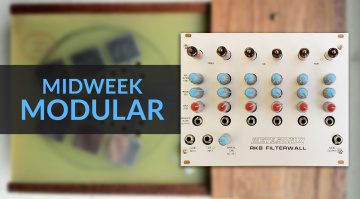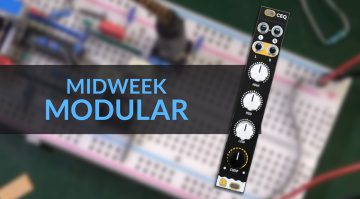Midweek Modular: Machina Bristronica festival of synths
Machina Bristronica took off in Bristol over the weekend and packed in over 80 synth and modular brands along with workshops, live music and discussions. Here are my modular highlights.
Midweek Modular at Bristronica
It was a marvellous event at the Document venue in Bristol. A huge hall engulfed over 80 brands, showing off the latest synthesizers and modular. Over on one side, DIY workshops introduce people to the joys of soldering and circuit design. In a large side room, Gaz Williams was hosting talks and panels on a range of fascinating subjects. In a smaller room, electronics wizards were imparting their knowledge to eager students of sound. Outside in a comfortable marquee, DivKid ran a series of interviews with manufacturers, and at the bar, live music and visual performances filled the space with the throb of control voltage.
The event was well executed, safe, inspiring, friendly and full of all the things we like best. But was there anything new? Yes! It was difficult to see and appreciate everything in one day, but I’ve gathered together a few things that really caught my attention.
RYK FM Module
RYK Modular was showing a new module prototype that is an attempt to offer a simple FM synthesis engine. It works in a similar way to the Vector Wave, but the idea is to put all the controls on the front panel. So there should be no menu diving or button combinations to learn, just four oscillators combined in algorithms to experience the joys of waveforms colliding.
The currently unnamed module gives you four sine wave oscillators with level and frequency knobs. The “Algo” button cycles through various 4-Operator FM algorithms. You have controls over detuning, warping and folding, and there appears to be cross-modulation and amplitude modulation.
I didn’t get a chance to hear it, but I love the simplicity of the design and how it works perfectly with the look of the other modules.
Vostok Instruments Atlas
Vostok likes to have multiple instances of the function going on in one module. The Sena is four oscillators in a module, the Fuji is six envelopes, Ceres is six VCAs. And so when it comes to the new Atlas what we find is a module with four filters.
Each of the four filters is identical with high, low and bandpass options. There’s a cutoff and resonance knob with CV control over both, and a switch to swap the resonance control back to the cutoff for some combined LFO and envelope action. At the bottom is an “Interpolating Scanner Bank” which, I believe, lets you move all the filters together.
Otherwise, you can use the filters independently, or if the outputs are left unpatched, then they cascade to the next one for up to four filters in series.
Vostok manages to design these modules with a great sense of order and space, even when cramming a lot of duplicated functionality into one module.
- Vostok website.
Venus Instruments VENO-LOOPER
Venus Instruments had a prototype of its new twin loop recorder called VENO-LOOPER. It’s beautifully presented with a nicely clear interface that looks like you could get the hang of it in no time.
The basic idea is that you have two looper sections, each with up to four layers and overdubbing. You have control over the speed, length and start point, you can reverse the sample, crossfade and quantise. This could be really good fun.
Stochastic Instruments Strange-R +Things
There’s no way I’m going to be able to explain this properly because it pulls us into the murky world of “stochaotic” energy fields. But from what I can gather the Strange-R +Things module takes a musical phrase and improvises over it. So, rather than applying stochastic randomness to individual notes like you do on the Stochastic Inspiration Generator, this uses similar principles to manipulate a phrase.
You have control over things like the range of change and how far it moves from the intention of the original melody. There are interesting things like Stagger, Contour and Rate. It also has the ability to fulfil many other functions within your rack.
It’s going to take some further explanation I think but the melodies coming from it were quite amazing.
Play All Day PlayFader
While not contained by the limitations of a modular case the Playfader does have a lot of potential for your modular and MIDI systems. It’s essentially a pair of CV loopers running on two long-throw faders and some colourful chunky buttons.
Each channel can output CV and Gate information in response to movement. It’s clockable and loopable and through a load of button combinations, you can do some very interesting things. You can send out smooth voltage, you can scale it to notes and ranges, you can loop sequences or modulation, set time divisions and record it all happening as it happens.
The sideways display is slightly odd but completely effective. You can edit on the fly, change modes, punch in and when you come back to another mode it has a soft-pickup so your settings don’t lurch about the place. It’s nice and large which means that there’s no sense of feeling cramped like you often do in modular.
As a fascinating sideline Play All Day also runs retreats for synth nerds. So you can spend a week in Mallorca chilling out, making music and jamming with like-minded souls. What a fabulous thing!
You are currently viewing a placeholder content from YouTube. To access the actual content, click the button below. Please note that doing so will share data with third-party providers.
- Play All Day website.
More Bristronica
There was a lot more to see and experience on the day, and I would heartily recommend a visit when it next comes around. In the meantime here’s a video I did about it plus a playlist of videos shot by Sonic State.
You are currently viewing a placeholder content from YouTube. To access the actual content, click the button below. Please note that doing so will share data with third-party providers.
You are currently viewing a placeholder content from YouTube. To access the actual content, click the button below. Please note that doing so will share data with third-party providers.
 4,1 / 5,0 |
4,1 / 5,0 | 